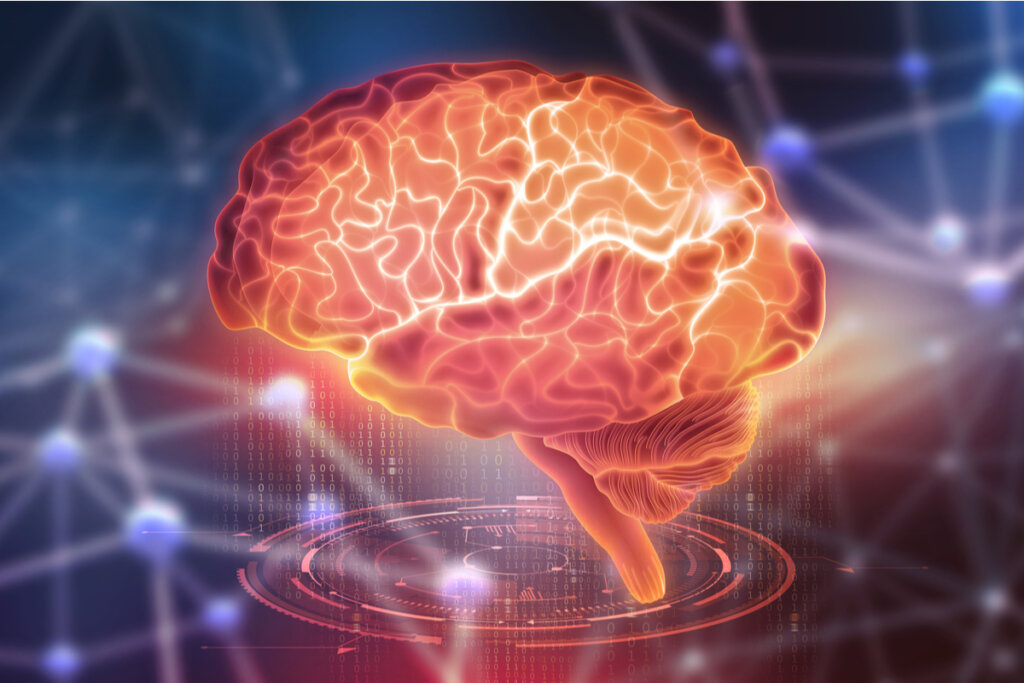What Happens in Your Brain When You Waver Between Love and Hate?


Written and verified by the psychologist Valeria Sabater
Have you ever experienced a stormy relationship? Most of us have been party to extremely passionate relationships that have led, at some point, without us really knowing why, to hatred. There are also some sibling relationships that waver between complicity and arguments. Not to mention certain friendships.
In fact, there are times when you hate your closest friends. Then, shortly after, you think they’re the best people in the world. Indeed, as a human being, you’re capable of experiencing really complex emotional states, in which emotions are present that could be said to be contrary or incompatible. Why does this happen? Is there some kind of fault in the human brain?
There’s more than one step between love and hate. In fact, there’s a dual carriageway with two lanes. The most powerful and defining emotions of the human being are also the best known by neuroscience. Therefore, this field can provide some interesting explanations about why we experience the disconcerting feeling of loving and hating someone at the same time.
Literature and cinema have demonstrated that, the more intense love is, the more intense hate can be. Today, science has proved that premise to be right.

Love and hate in the brain
Love can turn into hate in a matter of seconds. Indeed, in less time than it takes to snap your fingers, your world at an emotional level can completely change. This strange alchemy has long attracted the attention of cinema, television, and literature. And, of course, science. You only have to have a disagreement for the explosive and disturbing emotion of hate to instantly appear.
It’s often said that you can only hate those you love. While this phrase is extremely poetic, in reality, you can also hate those with who you have no relationship. However, the hatred you feel toward someone who’s close to you can be a unique and, sometimes, even dangerous experience.
Hate can often lead to aggressiveness. This is a frequent occurrence in emotional and family contexts. One example is the violence that arises in couples or in parent-child ties. As such, there really are times when you hurt the ones you love the most.
“You know that when I hate you, it is because I love you to the point of passion that unhinges my soul.”
-Julie de Lespinasse-
The insular region: the territory of emotional torment
Advances in neuroimaging techniques mean we now understand many mysteries in the world of neuroscience. For example, love and hate in the brain have been studied for quite some time with magnetic resonance imaging. One of the most notable studies was conducted by the University College of London (UK) in 2008.
The researchers discovered that the insula is the region of the brain that modulates intensity and emotional valence (whether the emotion experienced is positive or negative). They found that it’s in this area that the excitation effect of emotion is produced.
This is a phenomenon in which an emotional state changes from positivity (love) to negativity (hate) in a matter of seconds. The insula subjects you to those states of absolute ambivalence in which you alternate from the most intense affection to the most devastating contempt.
Love and aggressiveness share the same brain regions
Love and hate in the brain share the same pathways and brain structures. The neurologist, Semir Zeki, one of the authors of the work cited above, points out that both the insula itself and the putamen are activated during these two emotions. There’s no distinction. Therefore, you experience falling in love in the same neural regions that you feel hatred, contempt, and a complete lack of affection for someone.
As a matter of fact, aggressiveness and violent behavior can be activated in the putamen and insula. It’s rather surprising to think that events such as the desire for revenge and to cause harm are processed in the same structures that mediate romantic love.
That said, it does explain many violent behaviors within relationships. There are those who, driven by jealousy, momentary hatred, or a lack of affection, translate the disturbing emotion into aggression. And they do it despite loving the person they’re hurting. Obviously, there are also many more variables that mediate in this type of reaction, such as impulse control or the educational models with which we’re raised.
Experiencing love and hate at the same time feels contradictory and can lead to exhaustion. Nevertheless, emotional ambivalence serves a purpose; to enhance self-awareness.

Emotional ambivalence has a purpose
It can be an unsettling thought that love and hate in the brain are like a two-way highway that, in certain people, maybe a mechanism that triggers violence. On the other hand, there’s another idea to reflect on.
It’s the fact that emotional ambivalence, which is understood as experiencing two contradictory feelings at the same time, has both an end and a meaning. In this study, the authors indicate that this uncomfortable feeling drives us towards self-awareness. Also to the obligation to make a judgment, to make a decision.
The psychological discomfort that derives from contradictory feelings results in discomfort. It suggests that there’s something not going well in a relationship that must be solved. This is where processes such as reflection and emotional intelligence come into play.
Therefore, before letting yourself be carried away by shouting and disagreements, try and engage in conversation to help you resolve your differences. It’s important to always allow love to overcome hate.
All cited sources were thoroughly reviewed by our team to ensure their quality, reliability, currency, and validity. The bibliography of this article was considered reliable and of academic or scientific accuracy.
- Brogaard, B. (2017). “The Rise and Fall of the Romantic Ideal,” In R. Grossi & D. West (eds.), The Radicalism of Romantic Love: Critical Perspectives (pp. 47-63). Taylor and Francis.
- Sincoff, J. B. (1990). The psychological characteristics of ambivalent people. Clinical Psychology Review, 10(1), 43–68. https://doi.org/10.1016/0272-7358(90)90106-K
- Van Harreveld, F., Nohlen, H. U., & Schneider, I. K. (2015). The ABC of Ambivalence: Affective, Behavioral, and Cognitive Consequences of Attitudinal Conflict. In Advances in Experimental Social Psychology (Vol. 52, pp. 285–324). Academic Press Inc. https://doi.org/10.1016/bs.aesp.2015.01.002
- Zeki S, Romaya JP (2008). “Neural Correlates of Hate”, PLoS ONE 3: e3556
This text is provided for informational purposes only and does not replace consultation with a professional. If in doubt, consult your specialist.








